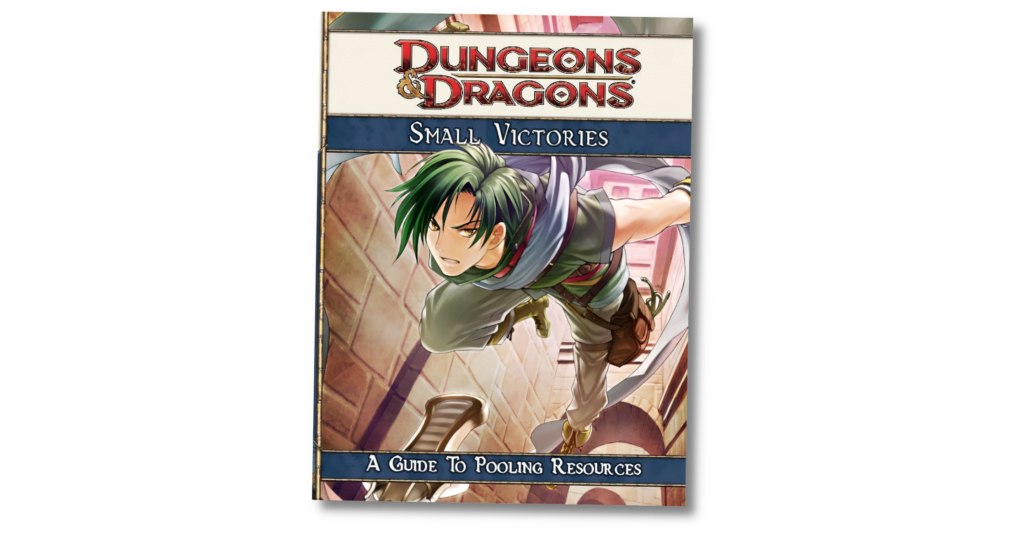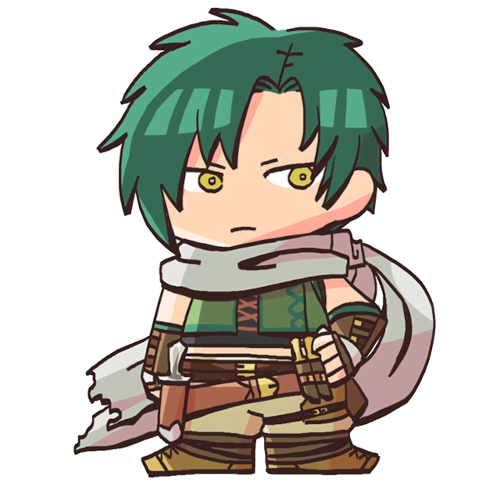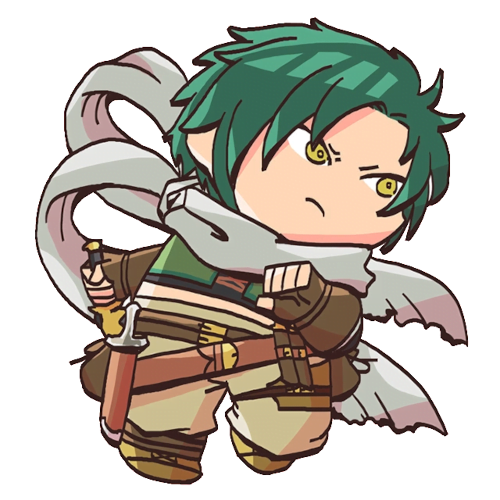In How To Be we’re going to look at a variety of characters from Not D&D and conceptualise how you might go about making a version of that character in the form of D&D that matters on this blog, D&D 4th Edition. Our guidelines are as follows:
- This is going to be a brief rundown of ways to make a character that ‘feels’ like the source character
- This isn’t meant to be comprehensive or authoritative but as a creative exercise
- While not every character can work immediately out of the box, the aim is to make sure they have a character ‘feel’ as soon as possible
- The character has to have the ‘feeling’ of the character by at least midway through Heroic
When building characters in 4th Edition it’s worth remembering that there are a lot of different ways to do the same basic thing. This isn’t going to be comprehensive, or even particularly fleshed out, and instead give you some places to start when you want to make something.
Another thing to remember is that 4e characters tend to be more about collected interactions of groups of things – it’s not that you get a build with specific rules about what you have to take, and when, and why, like you’re lockpicking your way through a design in the hopes of getting an overlap eventually. Character building is about packages, not programs, and we’ll talk about some packages and reference them going forwards.
Who are we looking at this month? Well, since this series was started off by Hilda from Three Houses, it seems positively rude on my part to not reach once more to the Fire Emblem well, with its wonderfully varied names and … embarrassingly limited mechanical scope.
Let’s look at a character from a Gamecube game about fighting a dragon, or a god, or the black knight, or something.

Examining Sothe
Setting aside the way he shows up in any other ‘this relates to Fire Emblem’ media like Fire Emblem Heroes, Sothe is present in two games: Fire Emblem: Pool of Radiance and Fire Emblem: Radiant Dawn. After doing extensive research into the Fire Emblem franchise, and built an extensive understanding of the game’s existing lore and general play fantasy, I have gathered information about the importance of this plot-vital character. As best I can tell, there’s no actual reason to care that much about keeping Sothe around. He’s the second thief you get in a game where you don’t need any thieves. In Path of Radiance, Sothe is there to set up his appearance in the second game, where I understand he’s much cooler. Poor guy got it rough.
Know what is cool though about Fire Emblem? It has a bunch of systemic information about the character. At a glance, I can tell that Sothe has a starting strength of 5, but a skill of 7 and a speed of 11. These are not the same stats as you’d see in D&D but you can interrogate what they’re meant to represent.
Sothe’s strength adds to his physical damage, but his skill and speed improve his critical hit rate. Critical hit rates aren’t something you can do a lot with in 4e D&D, but that’s still a sign that this character might not be the most powerful, aggressive fighter, not someone who can deadlift things, but thanks to his ability to hit things at the right time and the right place, he can do a lot of damage. Sothe doesn’t have any meaningful magical ability, and it doesn’t improve that well.
Also, in terms of what he does badly, he doesn’t have good defense or resistance, and those things don’t improve much either. In Radiant Dawn, he gets to be more or less the same thing, but moreso, with a special skill for dealing more damage to shapeshifting monsters. All of this mechanically indicates pretty much what you’d expect at the idea of a ‘sly thief’.
Alright, then, Sothe is a thief, mobile, able to engage in fights but not an individual who can pick up a horse and throw it. Light armour seems obvious, since that would be good for mobility, and he uses knives. All this stuff is covered pretty conveniently in most of our optional builds, so there’s no concern there.
Sothe’s beast-stalking seems… kind of hard to do anything with. That can be covered in D&D with silvered weapons, which are low priority in my opinion.
Glossary Note: Conventionally, the term used in D&D for this mechanical package is race. This is the typical term, and in most conversations about this game system, the term you’re going to wind up using is race. For backwards compatibility and searchability, I am including this passage here. The term I use for this player option is heritage.
Light armour, some strength (if you can spare it), good dexterity (so picking a class and heritage that amplify those options), and skills that let you sneak around and steal things.
I mean I’m not going to lie to you, I started thinking ‘this guy is just a thief, right?’ and I’m not wrong. An added challenge for Sothe, though, is the question of how do you add variety to a build for a character who at his heart is a game piece designed to slot into the spot of ‘a thief’?
Idea 1: The Rogue
Well duh.
Idea 2: The Ranger
If you like the idea of being a sneaky damage dealer like Sothe, but for some reason, you dont’ want to be ‘a thief’ – I mean why, how, what is it about Sothe that pulls your attention here, I do not get it – another good option is the Ranger. Rangers can be built with a lot of dexterity, and with attacks that use Dexterity to attack people. The best Ranger attack, Twin Strike, is a good example too, where you can (say) throw a pair of daggers at someone’s face with your knives. The skillset mostly lines up too and you can use themes to pick up more skills that fit your vision of this thiefy character. Amn is a good one – it gives you Streetwise and Thievery, which
I mean
Sothe is a Thief. You probably want Thievery, right?
Idea 3: The Warlord
Alright, now I know I’m pushing towards the edges, but bear with me here.
Sothe does not ‘heal’ people in Forced Femblem. Healing in that game is a very specific mechanic that works a particular way. But there is a build of the Warlord that cares about making opportunities and not making its own attacks.
The idea is a ‘Lazy Warlord.’ Fire Emblem is a game where units sometimes spend turn after turn not attacking and just waiting for things to engage you. You can, in fact, just idle on a map but be there, necessarily, because of some plot reason or another. I’ve watched enough Firey Wirey Emblemy Wemblemy to know that the core of the game is very much often about parking plot-relevant characters where they can’t be accidentally critted to death by randoms and turning the map into a kill box.
For that, I would suggest, a lazy warlord. Sothe is there, but Sothe isn’t there to fight. Sothe is there to enable your fighting, and to take advantage of opportunities.
In just heroic, you can do this with the following powers as you level up:
- Commander’s Strike (At Will)
- Direct the Strike (At Will)
- Overwhelming Force Trap (Encounter)
- Powerful Warning (Encounter)
- Friendly Fire (Encounter)
- Destructive Surprise
- Scent of Victory
With this power layout, you literally don’t need to be able to attack on your own at all. You can even take Fey Beast Tamer as your theme, and have a pet that can do your opportunity attacks or granted attacks. This is a build that doesn’t need any magical weapons at all, and that’s pretty wild!
Junk Drawer
Within the limits of a martial, non-magical character type that is lightly armoured, Sothe pretty much taps it out and reaches his goal immediately. Once you’re willing to expand a little bit, the Avenger becomes immediately obvious as an option for a weapon-wielding character that isn’t high strength, and cares about light armour and mobility. If you’re willing to allow some arcane magic into your Sothe’s life, you could also turn to the Skald, wielding a knife and letting people heal themselves while you attack around them.
I’ve talked about it before, but some characters line up obviously in what they do and how they do it. The trick then is to look for the next thing.



1 Comment
@updates I can't believe I didn't bring this up in the proof-reading stage, bust just for the record, "second thief in a game where you don't need any thieves" is mostly untrue for Radiant Dawn. Why? Well, they made most of the treasure into invisible map drops that you can only find by having a character in the required space win a skill% check, to which thief classes add a base of 60%. Presumably, because they really wanted you to bring Sothe :p